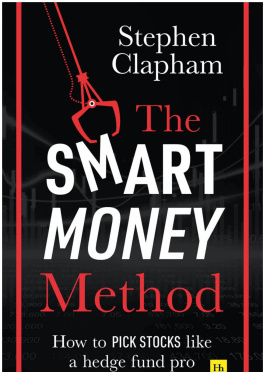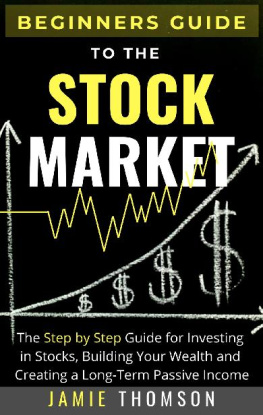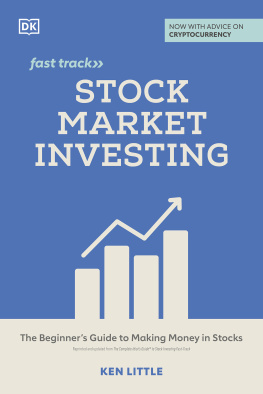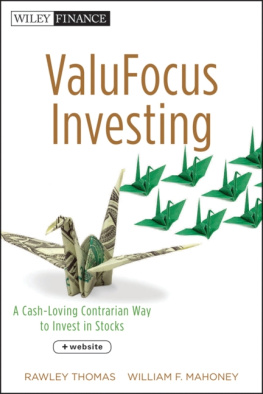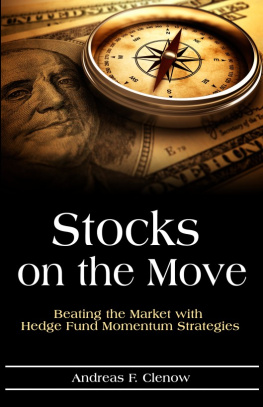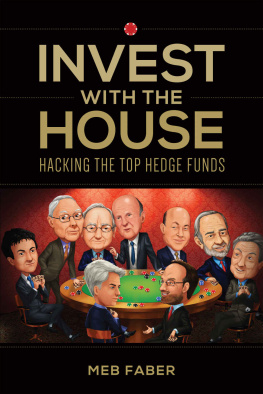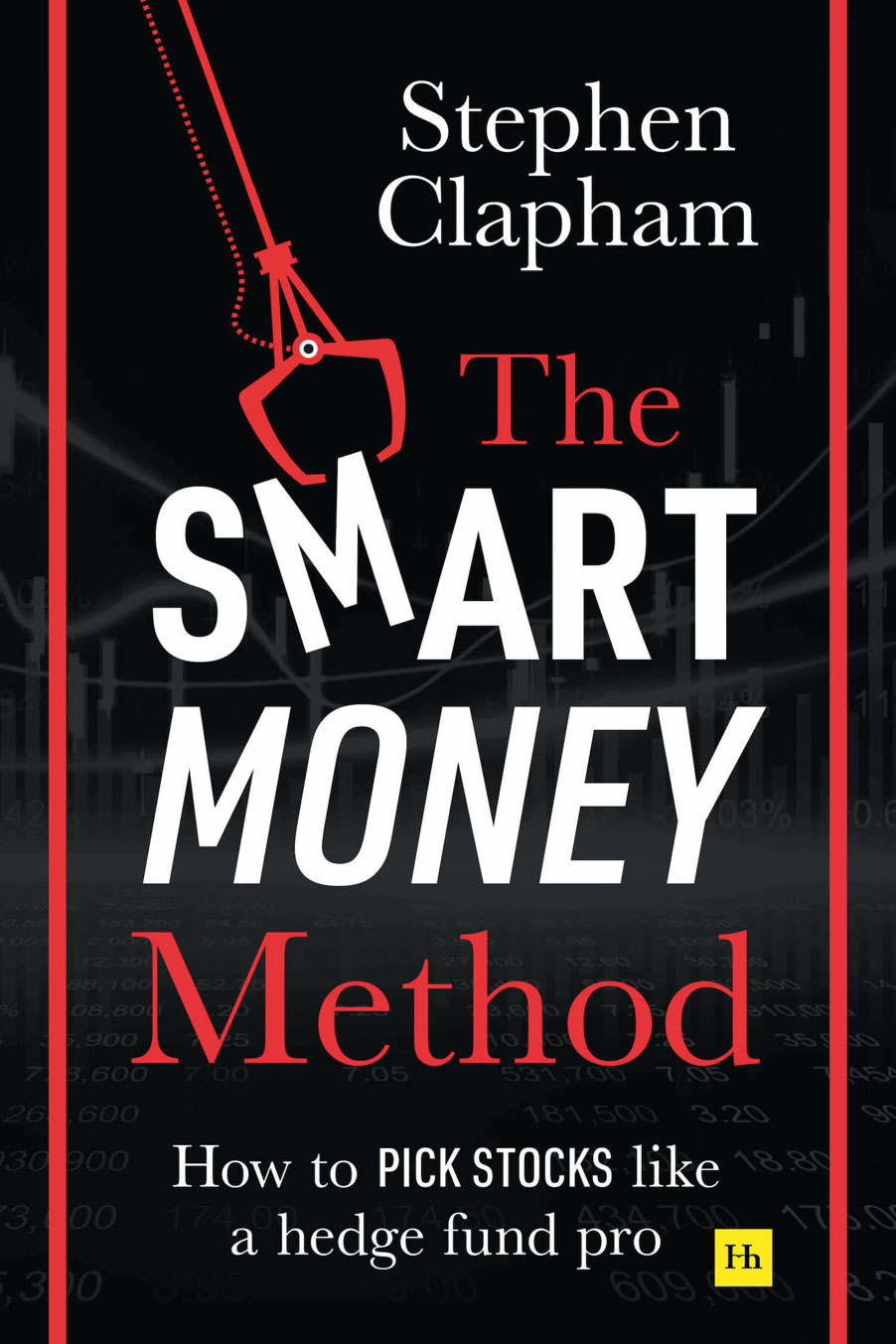The Smart Money Method
How To Pick Stocks Like A Hedge Fund Pro
Stephen Clapham
Contents
To Max and Finn.
Aim high.
Take the first step.
Have fun.
About the author
stephen clapham is the founder of Behind the Balance Sheet, a professional investor training consultancy and online school. Stephen trained as an accountant before joining the equity research department of Hoare Govett, one of Londons top stockbrokers. Stephen had a successful career as a sell-side analyst, working for various investment banks and consistently being rated as one of the top analysts in his sector in the leading surveys.
In 2005, he joined Toscafund to cover non-financial stocks. He has also held positions as a partner and head of research at two multi-billion hedge funds and one smaller fund. He has been responsible for international equity selection and for managing portfolios as a consultant to one of Londons top wealth managers, where he was also a member of the firms Investment Committee.
In 2018, he set up Behind the Balance Sheet as a training business, initially dedicated to helping professional investors improve their skills. His flagship product, the Forensic Accounting Training Course, had over 250 professional students in its first 18 months, and hundreds more have taken his other courses, webinars and online programmes.
Stephen is recognised as one of the leading commentators on fraud and aggressive accounting in quoted companies, and he regularly appears or is cited in the press, including BBC Radio 4s Today programme, The Sunday Times, Financial Times and specialist financial media such as the Investors Chronicle, The Acquirers Podcast and Real Vision.
Preface
What this book covers
In this book I present my research process over an investments lifecycle, from finding the original idea, through to pulling the trigger to buy the stock and then how to monitor it, and when to sell. We cover assessing the quality of the business, valuing the company, and thinking about how the stock will fit in the overall portfolio.
The book spends little time on investment theory I dont consider the theory to be particularly relevant or helpful to people trying to make money in the stock market. Investing is common sense and academic content can be confined to understanding a few valuation multiples and financial ratios (which I do explain).
I have tried to make the book as jargon-free and non-technical as possible.
Who this book is for
This book is for investors of any experience level. It will probably be of most benefit to intermediates, the equivalent of people who have started to do parallel turns in skiing. But even complete beginners should find this book accessible and I hope that many experienced and indeed professional investors will find a few nuggets which will help them improve their game.
How this book is structured
The structure of the book follows the chronological sequence of my research process. I start by finding a stock idea, so I first explain several methods to do this. I then explain how to test the hypothesis I usually think something is worth buying for one specific reason, so I check that this is valid.
I then explain how to evaluate the quality of the business model and of the company, how to evaluate its financial performance and assess the valuation of the stock, before explaining how I make the final decision to buy how much and at what price.
Finally, I explain how to monitor the investment, including watching the macro-economic environment, and then when to sell.
I finish off with some thoughts about how the pandemic may change my investment approach.
Introduction
Picking winning stocks is a key objective of every investor. There must be thousands of newsletters claiming to do exactly that, sometimes run by failed hedge fun d managers.
Myself, I am a former hedge fund equity analyst. The difference with this book is that I am not going to offer you stock tips. Instead, I offer a methodology which will help you develop your stock-picking skills and give you the tools and techniques to find great stocks which will beat the market.
Methodology and process are essential to successful investment. In this book, I explain the process I followed when I was a hedge fund analyst making huge investments in companies, with positions often well over $100m each.
When you are investing such significant sums, of course its necessary to do a huge amount of due diligence, beyond the capabilities of the average investor. The good news is that, as with most of such endeavours, the Pareto rule applies: 20% of the work will take you 80% of the way. And thats enough for 99% of stock decisions. Even better, I shall show you some of the shortcuts the professionals employ in evaluating an investment.
You might well wonder what qualifies me to write a book like this. I was an analyst at various investment banks, top-ten rated in my sector by investors every year. I then moved to join one of my clients and I have been a partner and head of research at two multi-billion-pound hedge funds based in London. I have picked international equities and run portfolios for a 5bn asset wealth manager. And I now run a business training institutional analysts at some of the UKs largest and most successful investors (and an online investor school).
For a few of my clients, I also do bespoke research. One called me in 2019 and asked me to review CK Hutchison, the Hong Kong quoted conglomerate, controlled by Li Ka-shing. Its an incredibly complicated business. My client (which has a team of 40 analysts) did not have the time nor the forensic skills to do an in-depth analysis.
CK Hutchison looked cheap it was trading on a P/E multiple of 78x, an extremely low valuation multiple. And it owns some fantastic assets: ports in Hong Kong and around the world; safe assets like Northumbrian Water, a regulated UK utility; and a string of renewable electricity generation assets. Other positive factors which attracted my client included:
Li Ka-shing is a billionaire and one of the worlds most successful businesspeople.
Many of the assets owned by the holding company would command multiples of twice or three times the parent, if separately quoted.
The group had a spread of interests, both geographically and across sectors, which should make it highly resilient to a downturn, reducing investment risk.
At the time, CK Hutchison was quoted in Hong Kong, where local unrest was then a factor in undermining the valuation of the local stock market. My client was naturally intrigued could they buy this high-quality portfolio of international assets at a discount? Perhaps the market disliked the stock because it was quoted in Hong Kong, although its business was not significantly exposed to the local unrest? I was asked to find out.
My normal modus operandi with a new complex company is to do an initial review to determine the scope of work and agree a framework with the client this can take a couple of hours or a day in the case of a complex business like this one. In four hours, I emailed the client to suggest abandoning this project.
Why? How could I do this so quickly?
The reason is simple I found a huge amount of debt (over $10bn!) in a structure which removed it from the group balance sheet, a consequence of CK Hutchisons use of complex ownership structures. Its debt looked lower than the economic reality and its valuation more attractive than it really was.

